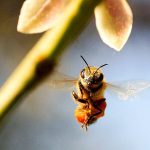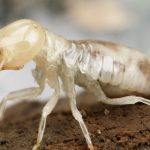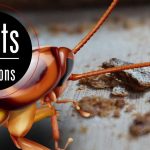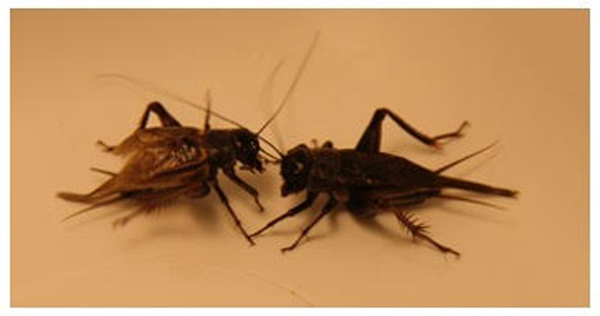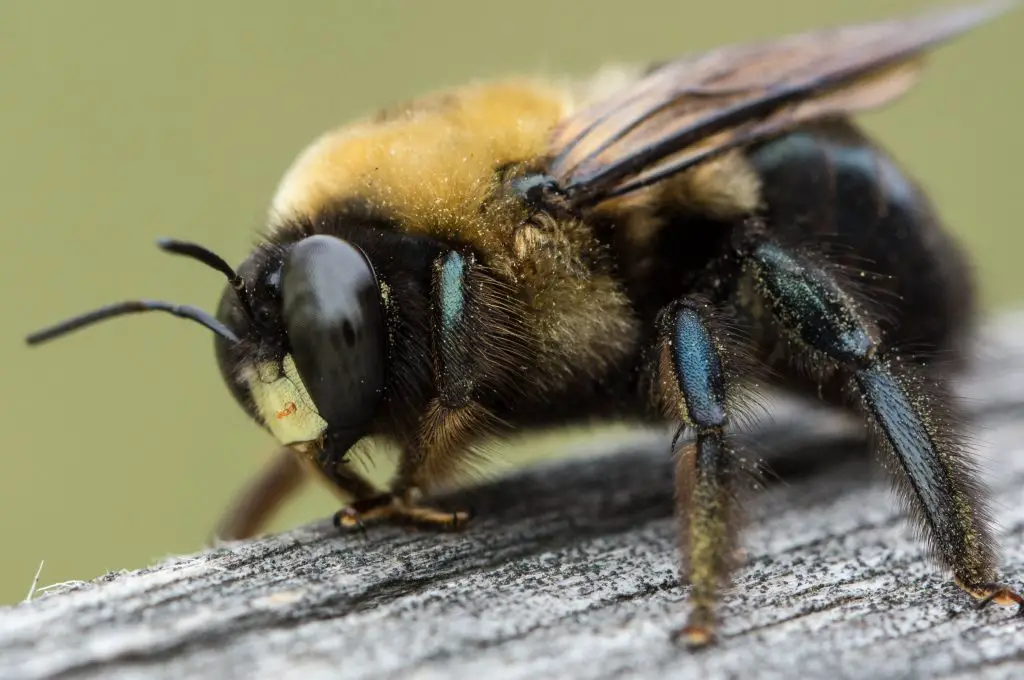If a cicada killer stings you, it can cause intense pain and swelling at the sting site. This occurs due to the venom injected by the wasp.
The cicada killer is a large solitary wasp that preys on cicadas, but it rarely stings humans unless threatened. However, if it does sting, it can result in discomfort and localized allergic reactions. In rare cases, individuals with severe allergies may experience anaphylaxis, which requires immediate medical attention.
Overall, while a cicada killer sting is painful, it is not typically considered dangerous unless you have a severe allergic reaction.

Credit: www.nationalgeographic.com
The Lifecycle Of A Cicada Killer Wasp
The sting of a cicada killer wasp can cause localized pain, redness, and swelling. It is important to avoid provoking these wasps and seek medical attention if stung to alleviate symptoms.
Cicada killer wasps are fascinating creatures with a unique life cycle that spans various stages. Understanding the lifecycle of a cicada killer wasp can provide valuable insights into their behavior and habits. In this section, we will explore the key stages in the life of a cicada killer wasp, shedding light on their intriguing journey from egg to adulthood.
Overview Of The Cicada Killer Wasp Lifecycle:
- Egg stage: A female cicada killer wasp digs a burrow in the ground and lays her eggs within it. She typically uses her powerful mandibles to excavate a hole, ranging from a few inches to several feet deep.
- Larval stage: Once the eggs hatch, the cicada killer wasp larvae emerge. They feed on paralyzed cicadas that the female wasp has carefully captured and stored as food provisions. During this stage, the larvae undergo a significant growth spurt, consuming the cicadas to fuel their development.
- Pupal stage: After the larval stage, the cicada killer wasp larvae spin cocoons around themselves and enter the pupal stage. Within these protective cocoons, they undergo a transformation process called metamorphosis, where they develop into fully-formed adult wasps.
- Adult stage: Once the metamorphosis is complete, adult cicada killer wasps emerge from their cocoons. These formidable wasps can measure up to two inches in length and boast distinct yellow and black markings. They are now ready to continue the cycle by mating and starting the process anew.
Key Stages In The Life Of A Cicada Killer Wasp:
- Burrow excavation: Female cicada killer wasps locate suitable nesting grounds and begin the process of digging burrows. This involves using their sharp mandibles to create tunnels in the ground, providing a safe environment for their eggs to hatch and develop.
- Egg deposition: After completing the burrow, the female wasp carefully lays her eggs inside individual cells within the nest. Each cell receives a paralyzed cicada as a food source for the developing larvae.
- Larval feeding: As the eggs hatch, the young cicada killer wasp larvae start feeding on the paralyzed cicadas stored by their mother. They consume the caterpillar-like insects, growing and maturing within the protective environment of the burrow.
- Cocoon formation: Once the larvae have reached their full size, they spin silk cocoons around themselves. These cocoons act as protective shields during the pupal stage when the larvae undergo the incredible transformation into adult wasps.
- Adult emergence: After spending a significant period in the pupal stage, the adult cicada killer wasps emerge from their cocoons. They must now navigate their way out of the burrow to begin their short-lived adulthood. The males will typically venture out first, eagerly awaiting the emergence of the females for mating.
- Mating and reproduction: The adult cicada killer wasps engage in mating activities, and the females will soon start the process all over again by locating suitable areas to excavate new burrows. The cycle continues as these remarkable wasps ensure the survival of their species.
Understanding the lifecycle of a cicada killer wasp helps shed light on their behavior and the fascinating process they undergo from egg to adulthood. By exploring the key stages in their life, we gain insight into their fascinating world and appreciate the remarkable journey that unfolds beneath our feet.
Understanding The Anatomy Of A Cicada Killer Wasp
The anatomy of a cicada killer wasp plays a vital role in its ability to sting. If stung by a cicada killer wasp, it can cause pain, redness, and swelling at-the site of the sting. Immediate medical attention is advised to manage any potential allergic reactions or complications.
Cicada killer wasps, with their impressive size and powerful stingers, are often feared by humans. But what exactly makes these wasps so unique and intimidating? Let’s take a closer look at the physical characteristics and anatomy of a cicada killer wasp:
Physical Characteristics Of A Cicada Killer Wasp
- Size: Adult cicada killer wasps can grow up to 2 inches in length, making them one of the largest wasp species in north america.
- Color: These wasps have a striking black and yellow coloring, similar to other wasp species, serving as a warning sign to potential predators.
- Wings: Cicada killer wasps have two pairs of transparent wings that enable them to fly with precision and agility.
- Antennae: Their long, slender antennae are used to detect vibrations and chemical signals, aiding in locating prey and potential mates.
- Stinger: The females possess a long, curved stinger located at the end of their abdomen, which they use to sting and paralyze their prey.
Unique Features Of A Cicada Killer Wasp’S Anatomy
- Mandibles: The strong mandibles of cicada killer wasps allow them to grasp and immobilize their prey. With their sharp mandibles, they can efficiently dismember captured cicadas for their larvae.
- Venom: Although cicada killer wasps possess venom, they primarily use it to immobilize cicadas, not as a defense mechanism against humans. The venom serves to paralyze the cicadas, providing a fresh food source for the wasp larvae.
- Ovipositor: The females possess an elongated ovipositor, located near the sting, which they use to deposit eggs into the paralyzed cicadas. This ensures a steady food supply for their developing offspring.
- Digestive system: Cicada killer wasps have a specialized digestive system that allows them to process and extract nutrients from the cicadas they consume. This efficient digestion enables them to provide optimal nutrition for their larvae’s growth.
- Compound eyes: Cicada killer wasps have large compound eyes, which provide them with excellent vision. This visual acuity helps them locate cicadas from a distance, ensuring a successful hunt.
Understanding the anatomy of a cicada killer wasp sheds light on their impressive and efficient hunting abilities. While their sting may cause discomfort, these wasps play a vital role in controlling cicada populations and maintaining ecosystem balance.
How Does A Cicada Killer Wasp Sting You?
A cicada killer wasp sting can cause pain, redness, and swelling at-the site of the sting. The venom from the sting can also trigger an allergic reaction in some individuals, leading to more severe symptoms such as difficulty breathing and hives.
Detailed Explanation Of The Cicada Killer Wasp’S Stinging Mechanism
Cicada killer wasps are not aggressive towards humans and generally do not sting unless provoked. However, if you happen to disturb or threaten a cicada killer wasp, it may sting you in self-defense. Understanding how the sting mechanism works can help shed light on the effects of a cicada killer wasp sting on humans.
Here’s a detailed explanation of the cicada killer wasp’s stinging mechanism:
- Cicada killer wasps have a modified ovipositor, which is a tube-like structure located at the end of the female wasp’s abdomen. This modified ovipositor functions as a stinger.
- When the wasp stings, it uses its ovipositor to inject venom into the target. The injected venom contains a mix of enzymes, toxins, and histamines.
- Upon stinging, the venom immediately begins to take effect. The histamines in the venom cause the blood vessels around the sting site to expand, resulting in localized swelling and redness.
- The injected toxins in the venom can also trigger an inflammatory response in the body. This response activates the immune system, leading to the release of chemicals that cause pain, itching, and inflammation.
- In some cases, individuals may experience an allergic reaction to the cicada killer wasp venom. This allergic reaction can manifest as more severe symptoms, such as difficulty breathing, dizziness, and swelling in areas other than the sting site.
- It’s important to note that these allergic reactions are relatively rare and usually occur in individuals who are already sensitized to insect venoms.
Knowing how the cicada killer wasp stings and the potential effects of a sting is crucial for understanding how to handle encounters with these wasps. It’s always best to avoid provoking them and give them their space to avoid unnecessary stings.
The Process Of A Cicada Killer Wasp Sting And Its Effects On Humans
When a cicada killer wasp stings a human, the process and subsequent effects can vary depending on the individual. Here is a breakdown of the process and effects:
- Provocation: Cicada killer wasps are generally unaggressive and only sting when provoked or threatened. Accidental contact or sudden movements near their nests or resting spots can trigger a defensive response.
- Sting delivery: Using its modified ovipositor, the wasp injects venom into the skin of the target. The stinger is designed to deliver venom efficiently, allowing the toxins to enter the body quickly.
- Immediate sensations: Shortly after the sting, you may experience immediate sensations such as sharp pain, burning, or a stinging sensation at-the site of the sting.
- Localized reactions: The body’s reaction to the venom results in localized swelling, redness, and warmth around the sting site. Itching and a raised bump may also occur.
- Inflammatory response: The venom triggers an inflammatory response, leading to the release of chemicals that cause additional pain, itching, and swelling. These symptoms typically peak within the first 24 to 48 hours.
- Allergic reactions: While rare, some individuals may have an allergic reaction to the venom. This can result in more severe symptoms, including difficulty breathing, hives, dizziness, and swelling in areas away from the sting site. Immediate medical attention is necessary for severe allergic reactions.
- Duration of symptoms: The symptoms of a cicada killer wasp sting usually subside within a few days to a week. However, everyone’s reaction can vary, and some individuals may experience lingering discomfort for a longer period.
While the sting of a cicada killer wasp can cause pain and discomfort, most people do not experience severe complications. Nevertheless, it is always recommended to seek medical advice if you have concerns about a sting or if symptoms worsen or persist.
Signs And Symptoms Of A Cicada Killer Wasp Sting
Cicada killer wasp stings can cause immediate pain, swelling, and redness at the site-of the sting. In some cases, individuals may experience allergic reactions such as difficulty breathing, dizziness, or hives. It is important to seek medical attention if any severe symptoms occur.
Common Signs And Symptoms Experienced After A Cicada Killer Wasp Sting:
- Immediate pain: Upon being stung by a cicada killer wasp, you will experience immediate pain at the site-of the sting.
- Redness and swelling: The affected area will likely become red and swollen following the sting.
- Itching or burning sensation: Itching or a burning sensation may accompany the redness and swelling caused by the sting.
- Raised welt or bump: A raised welt or bump often forms at the site-of the sting, which can be hard and tender to the touch.
- Localized warmth: The area around the sting may feel warm to the touch due to inflammation.
- Nausea and vomiting: In some cases, individuals may experience nausea and vomiting as a result of the sting.
- Muscle aches: Muscle aches or pain can occur near the sting site or in other parts of the body.
- Headache: A headache may accompany other symptoms after being stung by a cicada killer wasp.
- Dizziness or lightheadedness: Some people may feel dizzy or lightheaded following a sting.
- Overall discomfort: A general feeling of discomfort or unease may be experienced after a cicada killer wasp sting.
Allergic Reactions And Their Severity:
- Mild allergic reaction: For individuals with mild allergies, the symptoms may resemble those of a typical sting, but they may be more intense or last longer.
- Moderate allergic reaction: In moderate allergic reactions, symptoms can include widespread hives or rash, difficulty breathing, and swelling of the face, throat, or tongue.
- Severe allergic reaction (anaphylaxis): A severe allergic reaction to a cicada killer wasp sting is rare but can be life-threatening. Signs may include difficulty breathing, tightness in the chest, rapid heartbeat, low blood pressure, and loss of consciousness.
Remember, if you suspect you are having a severe allergic reaction, call emergency services immediately. It’s always important to seek medical attention for any sting if you experience severe symptoms or an allergic reaction.
Treating And Managing A Cicada Killer Wasp Sting
If you experience a cicada killer wasp sting, it can result in pain, swelling, and redness at the site-of the sting. It is important to clean the area, apply a cold pack, and take over-the-counter pain relievers to manage the symptoms.
Cicada killer wasps are large and intimidating insects that can deliver a painful sting if threatened. While their stings are not typically dangerous, they can cause discomfort and localized reactions. Knowing how to treat and manage a cicada killer wasp sting can help alleviate symptoms and promote a speedy recovery.
Here are some first aid measures and medical treatments available for different reactions:
First Aid Measures For A Cicada Killer Wasp Sting:
- Wash the affected area with mild soap and water to remove any venom residue.
- Apply a cold compress or ice pack wrapped in a cloth to reduce swelling and relieve pain.
- Elevate the area if possible to minimize swelling.
- Take over-the-counter pain relievers such as ibuprofen or acetaminophen to alleviate pain and reduce inflammation.
- Avoid scratching the sting site, as it can lead to further irritation and increase the risk of infection.
Medical Treatments Available For Severe Reactions:
- Seek immediate medical attention if you experience symptoms such as difficulty breathing, tightness in the chest, or swelling of the face, lips, or throat. These may indicate a severe allergic reaction.
- Epinephrine injections (epipen) may be administered by medical professionals to counteract severe allergic reactions.
- Antihistamines can be prescribed to reduce allergic symptoms, such as itching and hives.
- Corticosteroid creams or oral steroids may be recommended to reduce inflammation and itching if the sting site becomes significantly inflamed.
- In rare cases, medical procedures like incision and drainage or wound care may be needed if the sting site becomes infected or if there are complications.
Remember, while cicada killer wasp stings can be uncomfortable, most reactions are mild and can be managed with simple first aid measures. However, if you experience severe symptoms or have concerns about a sting, it is always best to consult a healthcare professional for proper evaluation and treatment.
Tips For Preventing Cicada Killer Wasp Stings
If you are stung by a cicada killer wasp, you may experience pain, swelling, and redness at the site-of the sting. It is important to seek medical attention if you have an allergic reaction to the sting or if the symptoms worsen.
Effective Methods For Preventing Cicada Killer Wasp Stings:
- Wear protective clothing such as long-sleeved shirts, long pants, and closed-toe shoes when spending time in areas populated by cicada killer wasps.
- Avoid wearing bright-colored clothing or floral prints that may attract the attention of the wasps.
- Apply insect repellents containing deet to exposed skin as an additional deterrent.
- Stay calm and avoid making sudden movements when a cicada killer wasp is in the vicinity. Sudden movements may provoke it to sting.
- Do not swat at the wasps or attempt to kill them. This may trigger defensive behavior and result in a sting.
- Keep windows and doors closed or use screens to prevent entry into your home.
- Avoid using scented products such as perfumes, lotions, or hairsprays, as they may attract cicada killer wasps.
- Dispose of food and beverages properly, ensuring that they are sealed and stored away from outdoor areas to prevent attracting the insects.
- If you come across a cicada killer wasp nest, keep a safe distance and avoid disturbing it. Agitating the nest can prompt defensive behavior from the wasps.
- Educate yourself and others about the behaviors and characteristics of cicada killer wasps to better understand how to avoid them.
How To Identify And Avoid Cicada Killer Wasp Nests:
- Look for signs of soil disturbance, particularly in sandy areas, as cicada killer wasps create burrows in the ground to build their nests.
- Observe the behavior of cicada killer wasps around burrow entrances. Females are typically seen going in and out of their nests, while males are often seen flying around the burrows.
- Pay attention to areas with a high concentration of cicadas. Cicada killer wasps prey on cicadas and are more likely to build nests in areas where cicada populations are abundant.
- Be cautious when walking or playing in grassy or sandy areas, as these are common habitats for cicada killer wasp nests.
- If you spot a cicada killer wasp nest, it is advisable to consult a professional pest control service for safe removal, as attempting to remove the nest yourself may result in stings or the wasps relocating to another area.
Remember, by following these preventative measures, you can greatly reduce your risk of being stung by cicada killer wasps and enjoy a safer outdoor experience. Stay informed, take precautions, and appreciate the beauty of nature without the fear of painful stings.
Myths And Misconceptions About Cicada Killer Wasp Stings
If you’re worried about cicada killer wasp stings, it’s important to know that they are not aggressive towards humans and their stings are usually mild. The pain from a sting is typically short-lived, with some swelling and redness, which can be managed with over-the-counter pain relievers and topical ointments.
Addressing Common Myths And Misconceptions Surrounding Cicada Killer Wasp Stings
Cicada killer wasps are fascinating creatures that often evoke fear and misunderstanding. With their large size and menacing appearance, it’s no wonder that myths and misconceptions about their stings have spread. To provide accurate information and dispel any fears, let’s address these common myths and misconceptions surrounding cicada killer wasp stings:
- Myth 1: Cicada killer wasp stings are extremely painful and dangerous.
- While cicada killer wasps are capable of stinging, their stings are generally not a cause for concern. Unlike other wasp species, cicada killer wasp stings are typically mild and pose minimal risk to humans, especially if you are not allergic to wasp stings.
- Myth 2: Cicada killer wasps are aggressive and are likely to sting humans unprovoked.
- Contrary to this belief, cicada killer wasps are actually not aggressive towards humans. They are solitary wasps and their main focus is capturing cicadas to feed their larvae. Cicada killer wasps are typically docile and will only sting if they feel-threatened or provoked. It’s best to observe them from a distance and avoid any actions that may startle or agitate them.
- Myth 3: Cicada killer wasp stings are venomous and can cause serious harm or even death.
- While it’s true that cicada killer wasps inject venom when they sting, the venom is not highly potent. For the majority of individuals, the symptoms of a cicada killer wasp sting are limited to mild pain, redness, and swelling around the sting site. Severe allergic reactions are rare, but if you experience symptoms like difficulty breathing, dizziness, or swelling in other parts of your body, seek medical attention immediately.
- Myth 4: Once a cicada killer wasp stings you, it will continue to attack relentlessly.
- Cicada killer wasps are not aggressive defenders of their territory nor do they exhibit the same behavior as social wasp species, such as yellow jackets or hornets. If you inadvertently disturb a cicada killer wasp and it stings you, it will likely retreat and return to its normal activities. Avoid swatting or harming them, as this can escalate the situation and potentially provoke further stings.
- Myth 5: The presence of cicada killer wasps indicates an infestation or danger.
- Cicada killer wasps are not an indication of an infestation or imminent danger. They tend to nest individually in the ground, creating burrows where they lay their eggs. Their presence often coincides with cicada populations, as cicadas are their primary prey. Appreciate these wasps as beneficial insects that contribute to controlling cicada populations rather than viewing them as a threat.
Understanding the truth behind these myths and misconceptions can alleviate unnecessary fears about cicada killer wasp stings. Remember, respect their space and observe them from a safe distance to marvel at their fascinating behaviors without any worry.
When To Seek Medical Assistance After A Cicada Killer Wasp Sting
If you have been stung by a cicada killer wasp, it is important to seek medical assistance to ensure proper treatment and avoid potential complications. Immediate care can help alleviate pain and reduce the risk of infection.
Indications For Seeking Medical Attention After A Cicada Killer Wasp Sting
Cicada killer wasp stings can be painful and may cause some discomfort. While most individuals will experience only mild symptoms that resolve on their own, there are cases where seeking medical assistance is necessary. It is important to be aware of the indications that may warrant medical attention after a cicada killer wasp sting.
These include:
- Allergic reaction: If you or someone you know develops symptoms of an allergic reaction after being stung by a cicada killer wasp, immediate medical attention is crucial. Signs of an allergic reaction may include difficulty breathing, chest tightness, swelling of the face, lips, tongue, or throat, hives, dizziness, or a rapid heartbeat.
- Severe pain or swelling: If the pain or swelling at the site-of the sting becomes severe and does not improve with time, it is advisable to seek medical attention. This could be a sign of an infection or a more severe reaction to the sting.
- Difficulty swallowing or speaking: If you experience difficulty swallowing or speaking after a cicada killer wasp sting, it is important to seek medical help immediately. These symptoms could indicate a more severe reaction and require immediate evaluation.
- Increasing redness or warmth at the sting site: If the redness and warmth around the sting site continue to worsen even after a few hours, it may be a sign of an infection developing. Seeking medical attention can help prevent further complications.
Importance Of Timely Medical Intervention
Timely medical intervention after a cicada killer wasp sting is essential to ensure proper treatment and minimize complications. Prompt medical attention can:
- Assess allergic reactions: Healthcare professionals can quickly evaluate any signs of an allergic reaction and administer appropriate medications, such as antihistamines or epinephrine, to manage the allergic response effectively.
- Provide pain relief: Medical intervention can include the administration of pain medication to alleviate any severe pain or discomfort caused by the sting.
- Prevent complications: If an infection develops at the sting site, healthcare professionals can prescribe antibiotics to prevent further complications and promote healing.
- Monitor and manage symptoms: Seeking medical assistance allows for close monitoring of symptoms. This helps identify any worsening or unusual signs that may require additional treatment or intervention.
Remember, while cicada killer wasp stings can be uncomfortable, most people will recover without significant complications. However, if you experience any of the indications mentioned above, it is important to seek medical attention promptly.
Frequently Asked Questions For What Happens If A Cicada Killer Stings You
What Is A Cicada Killer And Why Does It Sting?
Cicada killers are large wasps that sting to paralyze their prey. They are not aggressive towards humans unless provoked.
How Painful Is A Cicada Killer Sting?
The pain from a cicada killer sting is usually mild and lasts for a few minutes. Most people describe it as similar to a bee sting.
Can A Cicada Killer Sting Be Dangerous?
Cicada killer stings are not dangerous to humans, unless the person is allergic to insect stings. In such cases, a severe allergic reaction may occur.
What Should I Do If I Get Stung By A Cicada Killer?
If you get stung by a cicada killer, clean the area with soap and water. Apply a cold compress to reduce swelling and take an over-the-counter pain reliever if needed.
How Long Does It Take For A Cicada Killer Sting To Heal?
The swelling and pain from a cicada killer sting usually subside within a day or two. If symptoms worsen or persist, it is advised to seek medical attention.
Conclusion
While a sting from a cicada killer may not be life-threatening, it can certainly be painful and cause discomfort. The reaction to the venom varies from person to person, with some experiencing mild symptoms while others may have a more severe reaction.
It is important to remember that prevention is key when it comes to avoiding cicada killer stings. By being aware of their presence and taking precautions such as wearing protective clothing and avoiding their nesting areas, you can greatly reduce the chances of being stung.
If you do get stung, be sure to clean the area with soap and water, apply a cold compress to reduce swelling, and seek medical attention if needed. With knowledge and caution, you can coexist with these fascinating insects without fear of their stings.

“My name is Leo Jacob, and I hold a Bachelor of Science degree with Honors in Applied Environmental Science and Sustainability from the University of the West of Scotland. Since childhood, I’ve been passionate about living an eco-friendly life. After completing my studies, I dedicated myself to finding simple ways to lead a more environmentally conscious lifestyle. I launched ecolifely.com to share my educational background and practical experiences with everyone, hoping to inspire others to join me in creating a greener, more sustainable world.”



